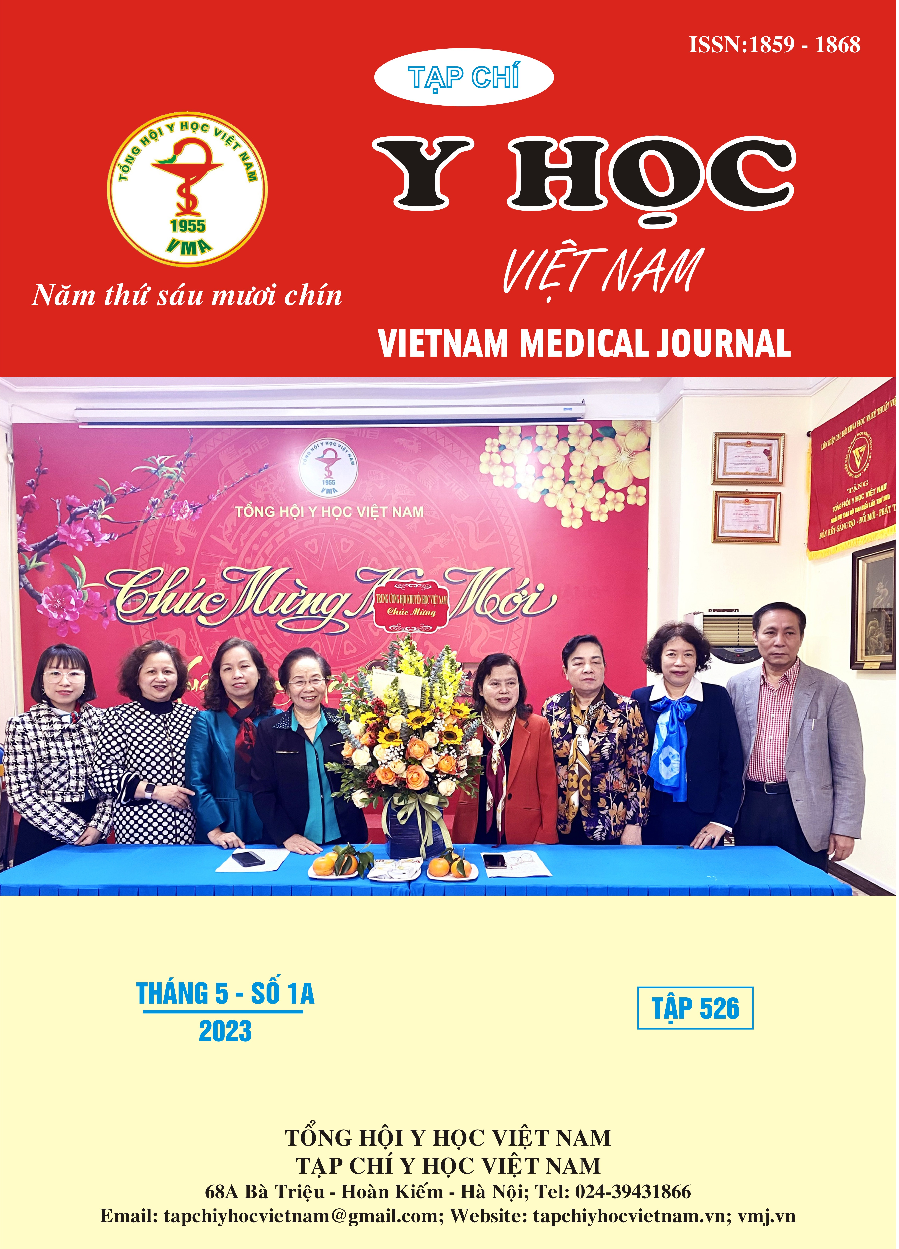PREVALANCE AND ANTIMICROBIAL RESISTANCE PROFILE OF COMMON BACTERIA ISOLATED FROM BLOOD CULTURES AT BAC NINH PROVINCE HOSPITAL IN 2021
Main Article Content
Abstract
Background: Sepsis is a severe acute infection that kills millions of people each year worldwide. The spread of antibiotic-resistant bacteria is the most urgent problem nowadays, and directly reduces the effectiveness of treatment and patients' health. Methods: This cross-sectional study aimed to determine bacterial isolates and their antimicrobial susceptibility in blood cultures in Bacninh province hospital, Bacninh, Vietnam. Results: Of 1534 blood cultures, 262 (17.1%) had at least one of bacterial pathogen. The most common bacteria were E. coli (22.1%), B. cepacia (21.8%), S. aureus (16.0%) and K. pneumoniae (14.1%). The resistant rate in E. coli ranged 51.1-83,0%, 51.1-59,6% for Cephalosporins and Fluoroquinolones, respectively, while in K. pneumoniae ranged 45.2-61.3% and 29.1-41.9%, respectively. The prevalence of extended-spectrum beta-lactamase (ESBL) producing E. coli and K. pneumoniae were 23.4% and 16.1%, respectively. B. cepacia isolates displayed high susceptibility to Meropenem (80.7%), Ceftazidime (93.0%) and Trimethoprim–Sulfamethoxazole (96.5%). The proportion of Methicillin-resistant S. aureus (MRSA) was 69.4%, while no Vancomycin-resistant isolate was detected. Conclusions: The leading pathogens were E. coli, B. cepacia, S. aureus and K. pneumoniae. Beta-lactamase combination agents or Carbapenem should be used for E. coli and K. pneumoniae infection treatment, while Cephalosporins should not. For S. aureus and B. cepacia infection treatment, Vancomycin and Trimethoprim–Sulfamethoxazole, respectively, are the first choice.
Article Details
Keywords
Sepsis, antibiotic resistance, E. coli, B. cepacia, Klebsiella, S. aureus
References
2. Bộ Y Tế (2017), Hướng dẫn thực hành kỹ thuật xét nghiệm vi sinh lâm sàng, tr 93-101.
3. Hoàng Quỳnh Hương, Nguyễn Thanh Hằng (2021), “Nghiên cứu tình trạng kháng kháng sinh của một số chủng Enterobacteriaceae gây nhiễm khuẩn huyết phân lập được tại Bệnh viện đa khoa tỉnh Thái Bỉnh năm 2018-2019”, Tạp chí Y học Việt Nam, tập 498, tr 47-50.
4. Quế Anh Trâm và cộng sự (2020), “Khảo sát sự đề kháng kháng sinh của các vi khuẩn gây nhiễm khuẩn huyết được phân lập tại trung tâm Bệnh nhiệt đới, Bệnh viện hữu nghị đa khoa Nghệ An (1/1/2019-31/12/2019)”, Tạp chí y học Việt Nam, tập 495, tr 363-369.
5. Vũ Thị Kim Cương và cộng sự (2015), “Tình hình kháng kháng sinh và các tác nhân nhiễm khuẩn huyết của bệnh nhân điều trị nội trú nhập bệnh viện Thống nhất từ 1/8/2014 đến 30/7/2015”, Tạp chí Y học TP. Hồ Chí Minh, phụ bản tập 19, số 6, 2015, tr 259-266.
6. Dat, V.Q., et al. (2017), Bacterial bloodstream infections in a tertiary infectious diseases hospital in Northern Vietnam: aetiology, drug resistance, and treatment outcome, BMC infectious diseases, 2017. 17(1): p. 1-11.
7. Dellinger, R.P., et al. (2008), Surviving Sepsis Campaign: international guidelines for management of severe sepsis and septic shock: 2008, Intensive care medicine 2008, 34(1), p.17-60.
8. Moon, H.-W., et al. (2014), Analysis of community-and hospital-acquired bacteraemia during a recent 5-year period, Journal of medical microbiology, 2014. 63(3): p. 421-426.


